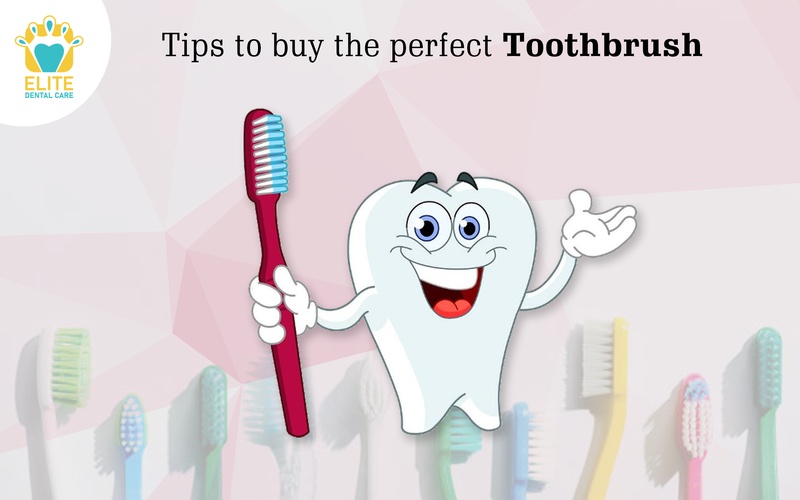
Looking to maintain a healthy and dazzling smile? Choosing the right toothpaste and toothbrush is crucial for optimal oral hygiene. With countless options available, navigating the dental care aisle can be overwhelming. But fear not! In this article, we’ll explore the world of toothpaste and toothbrushes, offering valuable insights to help you make the best choice for your smile. From fluoride content to specific dental concerns, each toothpaste variant caters to different needs. And when it comes to toothbrushes, whether soft bristles or electric wonders, there’s a perfect fit for everyone. Let’s embark on this oral care adventure together and unlock the secrets to a radiant smile!

How to Choose the Right Toothpaste and Toothbrush
Choosing the right toothpaste and toothbrush is crucial for maintaining good oral hygiene. With so many options available in the market, it can be overwhelming to make a decision. However, by considering a few key factors, you can ensure that you select the best products for your dental care routine.
Factors to Consider When Choosing Toothpaste
- Importance of Fluoride: Toothpaste containing fluoride is crucial for strengthening enamel and preventing tooth decay. While most brands include fluoride, it’s wise to confirm on the packaging.
- Addressing Specific Oral Health Needs: Tailor your choice based on your oral health requirements. If you have sensitive teeth, opt for toothpaste designed to alleviate sensitivity. Alternatively, if cavity prevention is a concern, select a toothpaste formulated for this purpose.
Understanding Toothpaste Selection
- Fluoride Content: Look for toothpaste with fluoride to strengthen enamel and combat decay.
- Oral Health Needs: Choose toothpaste suited to your specific concerns, such as sensitivity or cavity prevention.
Types of Toothpaste for Different Oral Health Needs
1. Fluoride Toothpaste: This is the most common type of toothpaste and is suitable for everyday use. It helps to prevent tooth decay and strengthen enamel.
2. Whitening Toothpaste: If you’re looking to brighten your smile, you may consider using a whitening toothpaste. These toothpastes contain mild abrasives that help to remove surface stains, giving you a whiter appearance.
3. Toothpaste for Sensitive Teeth: If you experience tooth sensitivity, look for a toothpaste formulated for sensitive teeth. These toothpastes contain ingredients that help to minimize discomfort and provide relief.
4. Natural Toothpaste: For those who prefer a more natural approach, there are toothpaste options available that use natural ingredients. These toothpastes are free from artificial colors, flavors, and preservatives.
5. Children’s Toothpaste: When selecting toothpaste for children, choose a fluoride toothpaste specifically formulated for kids. These toothpastes come in fun flavors and have lower fluoride levels to ensure safety.
It’s also worth considering the taste and texture of the toothpaste. Toothpaste comes in a variety of flavors, so choose one that you enjoy using. Additionally, some people prefer a gel consistency, while others prefer a paste. Experiment with different options to find what works best for you.
Choosing the Right Toothbrush
In addition to toothpaste, selecting the right toothbrush is equally important for maintaining good oral health. Here are some factors to keep in mind when choosing a toothbrush:
Bristle Type
When it comes to bristle type, you typically have the option of soft, medium, or hard bristles. Dentists generally recommend using a toothbrush with soft bristles. Soft bristles are gentle on the gums and tooth enamel, minimizing the risk of damage.
Manual vs. Electric Toothbrush
The choice between a manual or electric toothbrush ultimately comes down to personal preference. Both types can effectively clean your teeth when used correctly. Electric toothbrushes may provide additional benefits, such as built-in timers and pressure sensors to ensure proper brushing technique.
Size and Shape
Choose a toothbrush with a head size that comfortably fits inside your mouth. The shape of the toothbrush head should allow you to access hard-to-reach areas, such as the back molars.
Replacing Your Toothbrush
Remember to replace your toothbrush every three to four months or sooner if the bristles become frayed. A worn-out toothbrush is less effective at cleaning your teeth and gums.
In conclusion, choosing the right toothpaste and toothbrush is essential for maintaining good oral health. Consider factors such as fluoride content, specific oral health needs, and personal preferences when selecting toothpaste. When choosing a toothbrush, opt for soft bristles, consider manual or electric options, and ensure the size and shape suit your needs. By making informed choices, you can ensure that your dental care routine is effective and enjoyable.
Key Takeaways: How to Choose the Right Toothpaste and Toothbrush
- Consider your dental needs and any specific concerns you have.
- Look for toothpaste with fluoride to help prevent tooth decay.
- Choose a toothbrush with soft bristles to avoid damaging your gums.
- Check for the ADA Seal of Acceptance on both toothpaste and toothbrush.
- Consult with your dentist for personalized recommendations.
Frequently Asked Questions
In this section, we will answer some common questions about choosing the right toothpaste and toothbrush.
Question 1: What factors should I consider when choosing a toothpaste?
When selecting a toothpaste, there are a few key factors to consider. Firstly, you should look for a toothpaste that contains fluoride. Fluoride helps to strengthen tooth enamel and prevent tooth decay. Additionally, consider your specific dental needs. If you have sensitive teeth, look for a toothpaste formulated for sensitive teeth. If you have gum disease, a toothpaste with antibacterial properties may be beneficial. Finally, consider your personal preferences, such as flavor and texture, to ensure you enjoy using the toothpaste on a daily basis.
It’s also important to check the ADA (American Dental Association) seal on the toothpaste packaging. This seal indicates that the toothpaste has met the ADA’s standards for safety and effectiveness. By considering these factors, you can choose a toothpaste that suits your individual needs and preferences.
Question 2: How do I choose the right toothbrush?
Choosing the right toothbrush is essential for maintaining good oral hygiene. Firstly, opt for a toothbrush with soft bristles. Soft bristles are gentle on your gums and tooth enamel, minimizing the risk of damage. Additionally, consider the size and shape of the toothbrush head. It should comfortably fit in your mouth and reach all areas of your teeth and gums.
Manual toothbrushes and electric toothbrushes both have their benefits. Electric toothbrushes are generally more effective at removing plaque, but a manual toothbrush used with proper technique can also provide excellent results. Ultimately, choose a toothbrush that you feel comfortable using and that allows you to effectively clean your teeth and gums.
Question 3: Are there any toothpaste ingredients I should avoid?
While most toothpastes are safe to use, there are a few ingredients you may want to avoid if you have specific concerns or sensitivities. Some toothpastes contain abrasives, such as baking soda or charcoal, which can be harsh on tooth enamel. If you have sensitive teeth or weakened enamel, it’s best to choose a toothpaste without these abrasive ingredients.
Another ingredient to be cautious of is sodium lauryl sulfate (SLS), which is a foaming agent commonly found in toothpaste. SLS can cause mouth irritations in some individuals. If you experience mouth sores or irritation, consider switching to an SLS-free toothpaste. As always, if you have any concerns, consult with your dentist for personalized recommendations.
Question 4: How often should I change my toothbrush?
It is recommended to replace your toothbrush every three to four months, or sooner if the bristles become frayed or worn. Over time, the bristles on your toothbrush can become less effective at removing plaque and bacteria. By replacing your toothbrush regularly, you ensure that you are maintaining optimal oral hygiene and preventing the buildup of harmful bacteria.
In addition to regular replacement, it’s important to clean your toothbrush properly after each use. Rinse it thoroughly with water and store it in an upright position to allow it to air dry. Avoid storing multiple toothbrushes in the same container, as this can lead to cross-contamination.
Question 5: Can children use the same toothpaste and toothbrush as adults?
While adults and children can generally use the same toothpaste, it’s important to consider the age and specific needs of the child. For infants and toddlers, it’s best to use a toothpaste specifically formulated for their age group, which usually does not contain fluoride. As children grow older and develop their permanent teeth, they can transition to using a fluoride toothpaste.
When it comes to toothbrushes, children should use toothbrushes that are specifically designed for their age and size. These toothbrushes have smaller brush heads and softer bristles to accommodate their smaller mouths and more delicate gums. It’s also important to supervise young children while they brush their teeth to ensure they are using proper technique and not swallowing toothpaste.
A Dentist’s Guide to Toothpaste
Final Summary: How to Choose the Right Toothpaste and Toothbrush
In conclusion, selecting the right toothpaste involves considering specific oral health needs like sensitivity or cavity prevention. Reading labels for key ingredients like fluoride and consulting with your dentist are crucial. Similarly, choosing the right toothbrush with factors like bristle type and handle grip ensures optimal cleaning and comfort. Armed with this knowledge, confidently navigate the dental care aisle for a bright, healthy smile.
Call or Book appointment online
:Ace Dental Care Alpharetta office: 678-562-1555 - Book Now
Ace Dental Care Norcross office: 770-806-1255 - Book Now
Disclaimer
This blog post was generated by artificial intelligence. The content of this post may not be accurate or complete, and should not be relied upon as a substitute for professional advice. If you have any questions about the content of this post, please contact us.
We are constantly working to improve the accuracy and quality of our AI-generated content. However, there may still be errors or inaccuracies. We apologize for any inconvenience this may cause.





